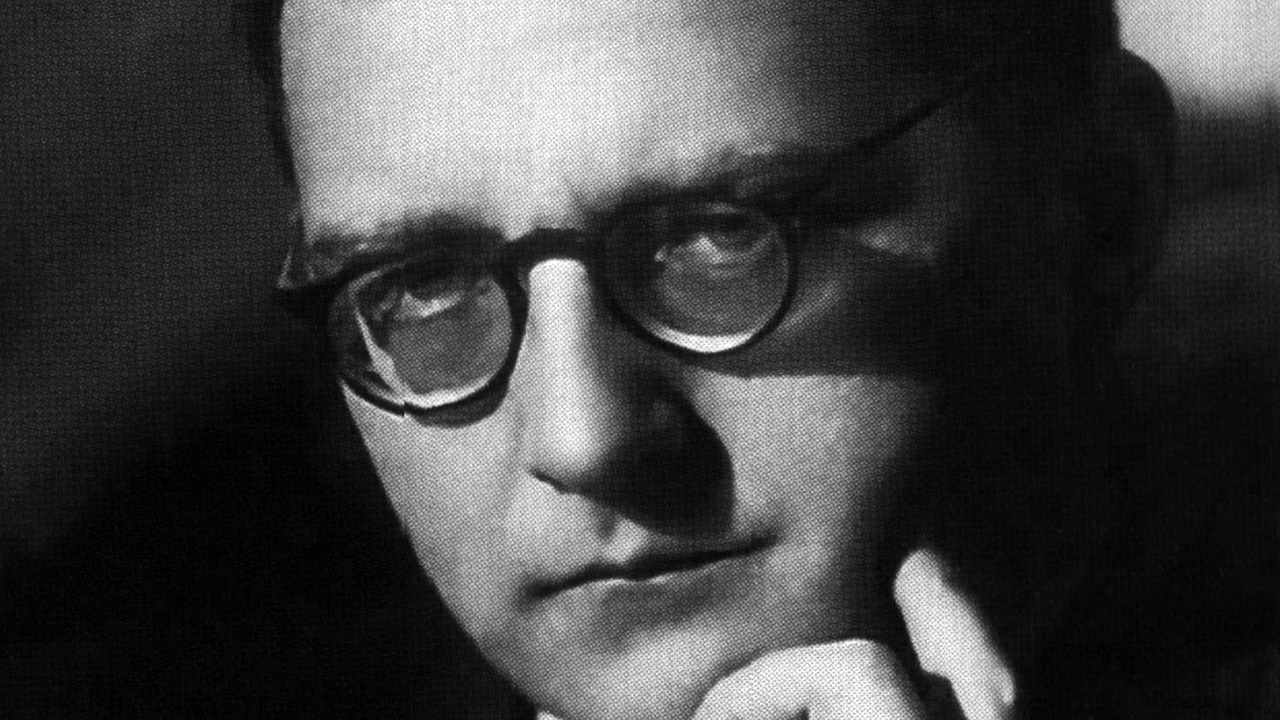PostClassical Ensemble at the National Gallery of Art
By Stephen Brookes • The Washington Post • November 5, 2012
There was a sizable Russian contingent in both the audience and the orchestra at the National Gallery of Art on Sunday night; not surprising, perhaps, given that it was the closing concert of the PostClassical Ensemble’s three-week festival devoted to Dmitri Shostakovich, the brilliant and controversial composer who was either a closet opponent or a passive supporter of the oppressive Soviet regime under which he worked. And it was, in every respect, a fascinating and compelling evening. The PostClassical Ensemble is famous for its innovative performances — which mix different media with unusual repertoire — and Sunday night’s concert took a fresh look at contrasting sides of Shostakovich’s character, featuring rarely heard transcriptions for string chamber orchestra of two of the composer’s most personal string quartets.
And it was, in every respect, a fascinating and compelling evening. The PostClassical Ensemble is famous for its innovative performances — which mix different media with unusual repertoire — and Sunday night’s concert took a fresh look at contrasting sides of Shostakovich’s character, featuring rarely heard transcriptions for string chamber orchestra of two of the composer’s most personal string quartets.
The concert opened with the Chamber Symphony for Strings in C Minor, Op. 110a, the transcription by Rudolf Barshai of Shostakovich’s autobiographical eighth quartet. Beefing up a quartet to an ensemble five times as large is risky; delicate details get lost, and edge and agility are often sacrificed for power. But under the nuanced and utterly fluid direction of Angel Gil-Ordonez, the work lost none of its roiling, acrid bite nor its unearthly luminosity. The wild-eyed allegretto was as menacing as ever, the three largo movements even more sweeping and ethereal than in the quartet version, and concertmaster Oleg Rylatko brought off the lead violin lines with genuine ferocity and power. The quartet may be a whirlwind, but in these hands, the chamber version became a tornado.
A typically PostClassical touch followed, as a recording of Shostakovich himself playing his Prelude in C Major drifted, ghost-like, from speakers high in the hall. Pianist George Vatchnadze then took the stage to play the same work (with its accompanying Fugue) as well as the Prelude and Fugue in G minor, providing an island of calm and transcendent clarity before the closing work, the Chamber Symphony for Strings in A-flat Major, Op. 118a (from the 1964 string quartet No. 10). Beautifully played, with a wonderfully scherzo-like allegro furioso and a profound, deeply moving adagio passacaglia, it proved to be a work of stunning power and grace — perhaps even more beautiful than the original version for quartet.


Reader Comments